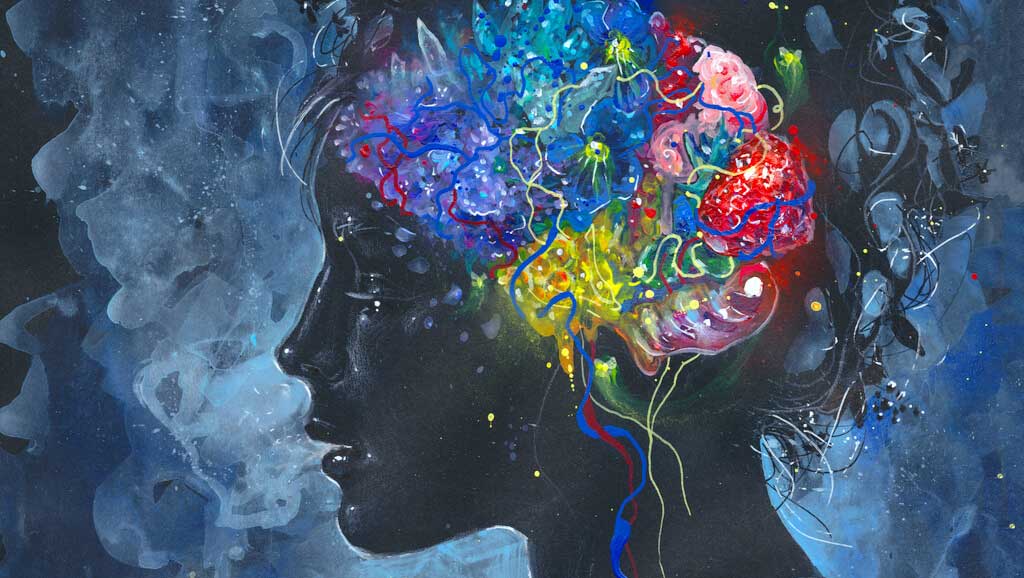In the 1950s, several groups of psychiatrists on both sides of the Atlantic performed a series of pioneering studies into the therapeutic potential of psychedelic drugs. Their work provided preliminary evidence that LSD may be effective in treating alcoholism and various psychiatric conditions, but the substances were soon outlawed in response to the hippie counterculture movement, and the research was halted.
The moratorium on psychedelic research lasted nearly 30 years. In the 1990s, researchers and others showed a renewed interest in the therapeutic potential of these substances, and today there are dedicated research groups around the world. In April 2019, Imperial College London launched the world’s first Centre for Psychedelic Research, and in September, Johns Hopkins University launched its own for Psychedelic and Consciousness Research.
Scientists here and elsewhere are busy studying how psychedelics affect the brain and conducting human clinical trials testing their efficacy as treatments for everything from treatment-resistant depression to post-traumatic stress disorder (PTSD). Earlier this year, Robin Carhart-Harris, director of the Centre for Psychedelic Research at Imperial, and his colleague Gregory Scott, proposed using psilocybin – the psychoactive ingredient found in ‘magic’ mushrooms – as a treatment for disorders of consciousness. Their proposal raises several ethical issues.
Complexity as a Measure of Consciousness?
Disorders of consciousness typically occur following severe acquired traumatic brain injury that disrupts the brain systems involved in arousal and conscious awareness. Coma patients show no signs of being awake and no signs of conscious awareness. A coma usually lasts up to one month; after that, a patient may progress into a vegetative state, in which they are awake but show no overt signs of awareness, or into a minimally conscious state, in which they inconsistently show a little awareness of themselves and their environment. Patients are more likely to recover from the minimally conscious state than from the vegetative state; currently, however, it is very difficult for clinicians to tell these two conditions apart.
The proposal to use psychedelics as a treatment for patients with consciousness disorders is based on the theoretical concept of brain complexity. The vertebrate brain is segregated into localized areas that differ in their structure and function, but perception and behavior require global integration of information from these multiple areas. Brain complexity is a measure of the interplay between segregation and integration, and can be defined as the extent to which individual neurons interact across multiple scales.
Some theorists link measures of brain complexity to levels of conscious awareness, and predict that complexity should be at high levels during the normal waking state and lower in states in which consciousness is lost. Some of these predictions have been borne out in experiments showing, for example, that various measures of complexity decrease under anesthesia and during non-rapid eye movement sleep, and may also reliably discriminate between vegetative and minimally conscious patients. There is also some evidence that psychedelic drugs increase brain complexity in humans. From this, it follows that psychedelics might increase brain complexity in patients with consciousness disorders, leading to heightened levels of conscious awareness.
Questions of Consent
In a forthcoming paper, bioethicist Andrew Peterson of George Mason University and his colleagues discuss the ethics of using psychedelic drugs on patients with consciousness disorders. The paper, published in the journal Neuroscience of Consciousness this month, includes a list of questions which they hope would help guide such a trial.
“Consent is one of the major issues raised by this proposal,” says Peterson. “Given the laws and policies ensuring the safety of research participants, you have to seek consent from somewhere. These patients would likely be incapable of providing consent on their own, but most jurisdictions would agree that a surrogate, such as a family member or next-of-kin, could consent on their behalf.”
Another important question would be whether administration of psilocybin in these patients poses no more than a minor increase over minimal risk. Assuming consent to administer a psychedelic was obtained, the unpredictable effects of these drugs raise another dilemma. “What if it works and the patient starts to emerge [from the vegetative or minimally conscious state] but then has an adverse psychological experience?” Peterson asks. “What do you do then? Do you discontinue the patient from the trial, or ignore it?”
“If a child says, ‘I don’t want to do this anymore’ halfway through a trial, researchers are obliged to listen to that and withdraw them,” he says. “Psychedelics can cause this potential change in cognitive function in the trial. How would the patient’s preferences be incorporated within the consent procedure? Perhaps you’d need an ongoing consent procedure for the trial.”
Carhart-Harris and Scott suggest a micro-dosing strategy, “whereby threshold perceptible doses of psychedelics are given two to three times per week, and acute psychological ‘side effects’, such as anxiety, may be minimal.” But this raises further questions. If, for example, such a treatment proved to be effective, would the drug have to be administered indefinitely to maintain a certain level of conscious awareness? And what psychological effect might long-term administration of a psychedelic have?
“It seems that we still need far more information about the relationship between psilocybin and brain complexity,” says Peterson, “so we think the best thing to do is start with healthy participants. If you’re able to shore up the hypothesis [that psychedelics increase brain complexity], then try it in patients with mild cognitive deficits, to see if it’s therapeutic for them.”
“It’s a very interesting and plausible hypothesis, but these are the kinds of questions that we’d hope would be asked before beginning a trial like this.”

